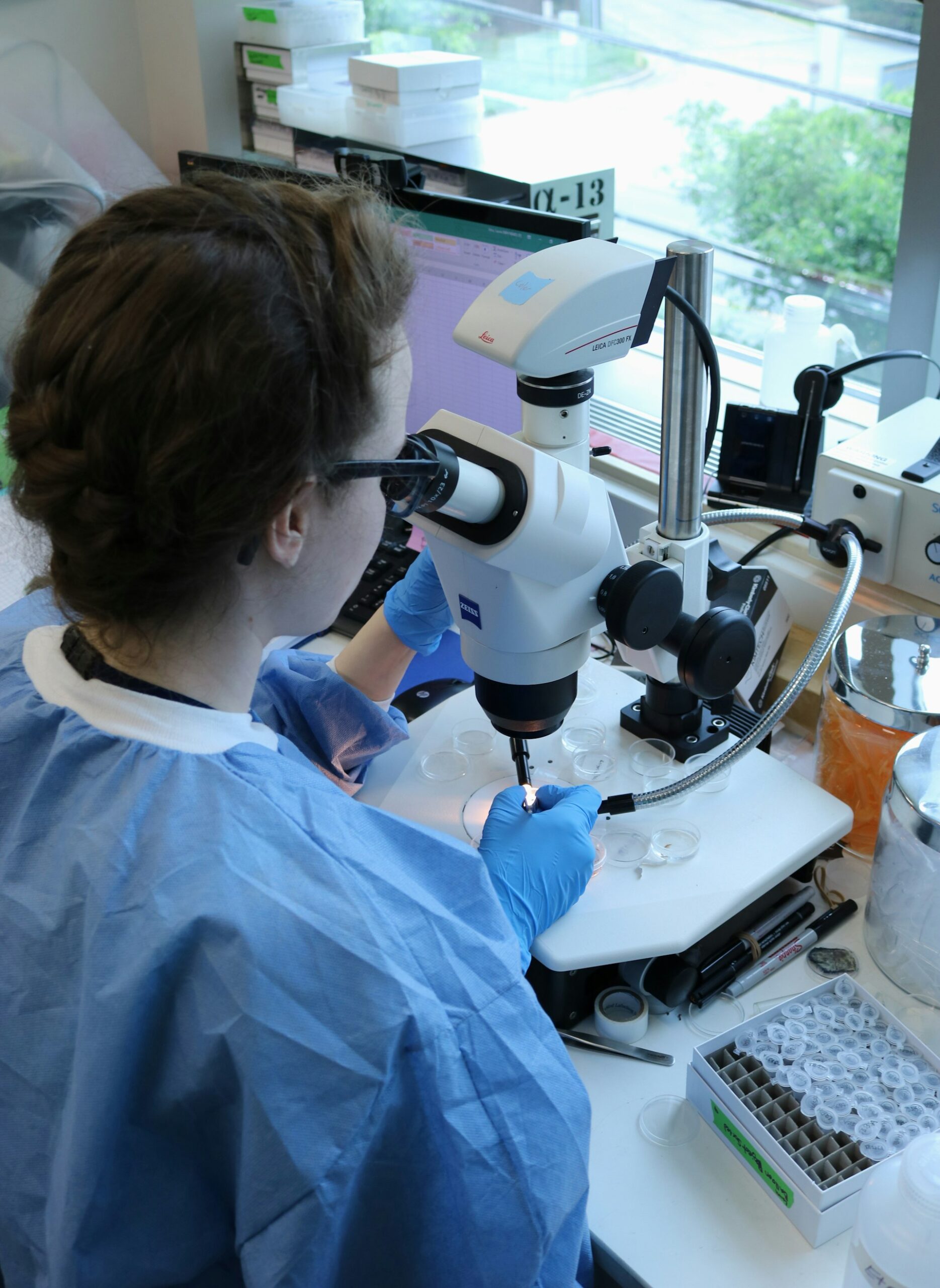Circular Economy Solutions for Reducing Laboratory Waste: Actionable Strategies for Greener Research

Photo by Karan Mridha on Unsplash
Introduction: Rethinking Laboratory Waste in the Circular Economy
Laboratories are hubs of innovation, but their operations generate significant amounts of waste, particularly single-use plastics, chemicals, and packaging. The traditional linear approach-use, discard, and landfill-poses environmental and financial challenges. The circular economy offers a transformative model: shifting from waste disposal to resource recovery, product reuse, and closed-loop systems. This comprehensive guide explores how laboratories can implement circular economy approaches to drastically reduce waste and environmental impact, while maintaining high research standards.
Understanding the Circular Economy in Laboratory Settings
The circular economy is based on designing systems where materials are kept in use for as long as possible, extracting their maximum value before recovery and regeneration. In laboratories, this means reconsidering waste as a resource-repurposing, refurbishing, and recycling instruments, chemicals, and consumables wherever possible. This paradigm is increasingly supported by global frameworks, such as the United Nations’ Sustainable Development Goals, and industry initiatives including My Green Lab certifications [4] .
Core Strategies for Circular Economy Implementation in Labs
1. Waste as a Resource Stream
Instead of treating laboratory waste as a liability, circular economy approaches encourage labs to view waste streams as potential sources of valuable materials. For example, precious metals from electronic waste or chemicals from biological processes can be recovered and reintroduced into the supply chain. This requires innovative sorting, extraction, and purification technologies, as well as robust segregation protocols [1] .
Example:
University research groups have developed processes to reclaim metals from discarded catalytic converters, using advanced leaching and reduction techniques. These reclaimed materials are then used to manufacture new laboratory equipment, reducing the need for raw material extraction
[3]
.
Implementation Steps:
- Map all major waste streams within the laboratory
- Identify components with recoverable value (metals, plastics, solvents)
- Partner with certified recycling facilities or in-house recovery systems for targeted waste streams
Challenges:
Not all waste streams are easily recoverable; hazardous waste and mixed-material items may require specialized handling. Labs must conduct regular audits and consult with waste management professionals to identify feasible recovery opportunities.
2. Closed-Loop Systems and Upcycling
Designing laboratory processes with closed loops in mind is a cornerstone of the circular economy. This involves minimizing reagent consumption, maximizing yields, and ensuring materials can be recovered or upcycled into higher-value products. For example, some universities now use 3D printers to transform shredded lab plastics into reusable lab equipment and furniture, keeping materials in circulation and reducing landfill loads [3] .
Implementation Steps:
- Invest in modular, repairable equipment to extend lifespan
- Develop internal protocols for cleaning and reusing non-hazardous plastics and glassware
- Explore upcycling opportunities-such as converting old plastics into new lab supplies or construction materials
Case Study:
The University of Pittsburgh, in collaboration with Polycarbin, pioneered a closed-loop recycling program. Used plastic items like pipette tip boxes are collected, decontaminated, and transformed into new lab products, creating a circular material flow and reducing landfill waste
[2]
.
3. Industrial Symbiosis and Resource Sharing
Industrial symbiosis involves collaboration between laboratories, institutions, or even industries, where the waste or surplus resources from one facility become the input for another. This can be as simple as sharing surplus reagents or as complex as exchanging specialized equipment or chemical byproducts [1] .
Implementation Steps:
- Join or establish reagent-sharing networks within your institution or region
- List surplus or expiring chemicals on internal exchange platforms
- Coordinate with nearby labs or industries to exchange waste streams or resources
Challenges:
Coordination and regulatory compliance can be complex, especially with hazardous materials. Documentation, tracking, and liability management are essential to ensure safe and compliant exchanges.
4. Sustainable Procurement and Equipment Maintenance
Embedding circular economy principles in procurement means selecting products and suppliers committed to durability, repairability, and take-back programs. Labs should prioritize modular equipment, encourage leasing or shared-use models for expensive items, and develop maintenance schedules to extend equipment life [4] .
Practical Steps:
- Choose vendors offering take-back or refurbishment services
- Opt for equipment with modular design for easy upgrades and repairs
- Establish preventive maintenance protocols and detailed maintenance logs
Alternative Models:
Some facilities lease high-cost equipment or use shared core facilities to maximize utilization and minimize idle resources, reducing the need for duplicate purchases and lifecycle waste.
5. Tailored Recycling and Waste Segregation Programs
Effective recycling in laboratories depends on carefully designed segregation systems. This means clearly labeling bins for different waste types-general, recyclable, hazardous-and using specialized services for items like non-hazardous plastics or packaging. Training staff on these protocols is essential for compliance and effectiveness [4] .
Example:
Some labs have introduced solvent purification systems for in-house recycling, allowing solvents to be reused multiple times. Others have implemented comprehensive recycling for pipette tip boxes and packaging, dramatically reducing waste sent to incineration or landfill.
Implementation Steps:
- Conduct a baseline waste audit to identify key streams
- Set up color-coded and well-labeled bins at convenient locations
- Partner with certified lab recycling vendors for specialized waste
- Provide regular training for lab personnel on recycling protocols
Opportunities, Challenges, and Solutions in Circular Laboratory Practice
Transitioning to a circular economy model in laboratories can significantly reduce environmental impact, lower operating costs, and improve institutional reputation. However, challenges include regulatory hurdles, cost of new equipment or infrastructure, and the need for behavioral change among staff. Solutions involve leveraging industry partnerships, adopting emerging technologies, and participating in certification programs such as My Green Lab, which provides tools and guidance for sustainable laboratory operations [4] .
For laboratories seeking to implement these strategies, the following steps are recommended:
- Conduct a comprehensive waste assessment to identify major waste sources and potential recovery opportunities.
- Engage stakeholders-including researchers, procurement, and facilities management-in developing a circular economy action plan.
- Research and partner with vendors or platforms specializing in laboratory recycling, equipment refurbishment, and sustainable procurement.
- Set measurable goals (e.g., percent waste diverted from landfill) and monitor progress regularly.
- Train staff on new protocols and celebrate successes to build a culture of sustainability.
How to Access Circular Economy Resources for Your Laboratory
Laboratories interested in circular economy approaches can take several actionable steps:
- Connect with industry groups like My Green Lab for certifications, toolkits, and training on sustainable practices. Visit the official My Green Lab website to explore resources tailored to laboratory sustainability.
- Search for local or national laboratory recycling vendors-such as Polycarbin-to establish closed-loop recycling partnerships. Confirm vendor credentials and recycling capabilities through official company websites.
- Leverage institutional sustainability offices or green teams for guidance and support in implementing new initiatives.
- Stay informed on regulatory requirements by consulting environmental health and safety (EHS) offices or government agencies responsible for laboratory waste management.
If you are unsure where to begin, consult with your institution’s sustainability office, or search for ‘laboratory circular economy initiatives’ and ‘lab recycling programs’ to identify regional partners and case studies.
Conclusion
Circular economy approaches in laboratory waste reduction are not only feasible but essential for building sustainable research environments. By viewing waste as a resource, designing closed-loop systems, fostering industrial symbiosis, and adopting sustainable procurement and recycling practices, laboratories can significantly reduce their environmental footprint. The journey requires commitment, collaboration, and ongoing education-but the rewards include cost savings, regulatory compliance, and a leading role in environmental stewardship.
References
[1] Sustainability Directory (2025). Laboratory Waste Reduction: A Circular Economy Perspective.

Photo by Markus Winkler on Unsplash
[3] SmartBrief (2024). Innovations in Lab Waste Recycling for Greener Research.
[4] Lab Manager (2025). Building More Sustainable Labs Through Circular Economy Practices.
[5] PFSCM (2024). Implementing Circular Economy Practices in Lab Procurement for a Greener Supply Chain.



